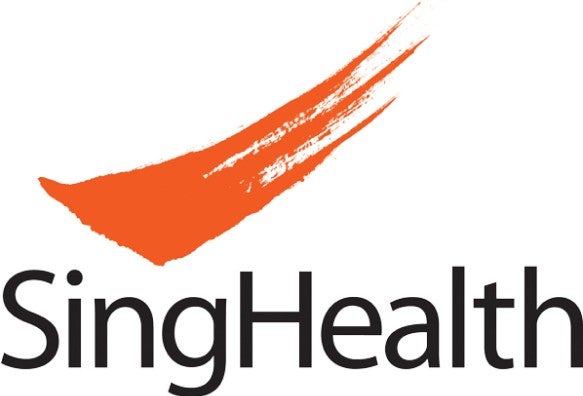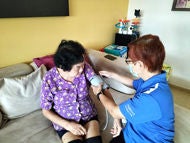
| Preoperative Anaesthesia Assessment Clinic (PAAC)
Fasting Instructions
Before surgery
You will receive a phone call informing you of the time and location of your surgery.
Fasting instructions (VERY IMPORTANT)
Do not consume any food , juice, drinks with milk or carbonated drinks after midnight. This is to minimise the risk of aspiration, where food is regurgitated from the stomach and into the lungs. Water is the best option to keep yourself well hydrated.
- No consumption of FOOD after midnight.
- You are then only allowed to have WATER up to 6 am.
- Ensure you drink 200ml of WATER at 6am.
- No more WATER is allowed after 6am.

Patient Information Sheet
PELVIC/PERINEUM SURGERY
(CENTRAL NEURAXIAL BLOCK (CNB) OR GENERAL ANAESTHESIA (GA))
On the day of surgery
You will report to either the Day Surgery or the Same Day Admissions unit as instructed. After registration, you will be asked to change into the operating theatre (OT) gown and see a doctor before going into the OT reception area.
Once in the OT, you will either undergo General Anaesthesia and fall into a ‘deep’ sleep during the surgery; or receive a Central Neuraxial Block to numb the lower half of your body before surgery starts, and be awake or sedated during the surgery.
General anaesthesia (GA)
- General anaesthesia is a state of controlled unconsciousness during which you will feel nothing. It is almost like being in a ‘deep’ sleep.
- Anaesthetic drugs will be injected into a soft plastic tube inserted into a vein in your hand. This is to induce the state of ‘deep’ sleep.
- These drugs stop your brain from responding to sensory messages travelling from the nerves in your body.
- You will be unaware of your surroundings, the surgery or pain.
- You will be asleep for the entire duration of the surgery and woken up only after the surgery is completed.
- You will have no memory of the procedure.
- Your anaesthetist and anaesthetic team will be with you during the surgery.
Common risks associated with GA
This will affect 1 in 10 to 1 in 100 patients who undergo surgery with GA.
- Nausea and vomiting – due to the side effects of the anaesthetic drugs and type of surgery.
- Sore throat – due to the presence of the breathing tube we use when you are asleep.
- Giddiness, headache or sleepiness – due to the remaining effect of the anaesthetic drugs.
- Aches, pains and backache – due to your body posture during surgery.
- Experience pain when drugs are injected – due to the side effects of the anaesthetic drugs.
- Bruising and soreness – due to your body posture during surgery and side effects of the anaesthetic drugs.
- Itch - due to the side effects of the anaesthetic drugs.
Uncommon risks associated with GA
This will affect 1 in 10,000 patients who undergo surgery with GA.
- Eye abrasion causing pain and requiring treatment.
- Damage to teeth and dental work, lips or tongue.
- Injury to the skin, eyes, nerve due to prolonged positioning .
Rare risks associated with GA
This will affect 1 in 10,000 to 1 in 100,000 patients who undergo surgery with GA.
- Being aware of activities in the operating room while still under anaesthesia.
- Inherited muscle sensitivity to particular anaesthetic drugs (malignant hyperthermia). This can cause a rapid rise in body temperature, heart rate and breathing with high blood pressure and muscle rigidity.
- Hoarseness of voice due to direct or indirect injury to the vocal cord.
Very rare risks associated with GA
- Allergy to anaesthetic drugs causing wheezing, rash, swelling, and low blood pressure, and poor circulation in severe cases.
- Heart attack (AMI - Acute Myocardial Infarction), stroke (CVA - Cerebrovascular Accident) and pneumonia.
- Brain damage or death.
Sedation
- This involves injecting medication through a vein to keep you drowsy and comfortable while you are under regional anaesthesia (RA).
- You may or may not remember the procedure because of the sedation. You may wake up intermittently, but will usually fall back asleep after.
Central neuraxial block (CNB)
- You may be offered a central neuraxial block as a sole technique for surgical anaesthesia.
- This technique involves an injection of local anaesthetic drugs at the back of your spine under sterile conditions.
- You will feel numb from the waist down and your legs will feel weak for up to 4-6 hours. This is so that you do not experience surgical pain at the operation site.
How is it performed?
- You will either be awake or lightly sedated for the procedure.
- Your anaesthetic team will help to position you: you will either sit at the edge of the bed with your feet on a low stool or you will lie curled up on your side with your knees tucked up towards your chest.

What will I feel?
- A spinal injection is often as painful as taking a blood test or having a cannula (plastic tube) inserted.
- Most patients feel no abnormal sensation but some may feel pins and needles or a sharp pain in one of their legs – if you do, inform your anaesthetist immediately and try to remain as still as you can.
- When the injection is completed, you will be asked to lie flat. The spinal anaesthetic works quickly and is usually effective within 5 to 10 minutes.
- Your skin will feel warm initially, then numb to touch and gradually your leg muscles will become weak.
- When the spinal anaesthetic is in full effect, you will not be able to move your legs or feel any pain below the waist.
Common risks associated with CNB
This will affect 1 in 10 to 1 in 100 patients who undergo surgery with CNB.
- Low blood pressure – as the spinal anaesthetic takes effect, it can lower your blood pressure. This can make you feel faint or nauseous. Your anaesthetist will give you intravenous fluids and medications to raise your blood pressure.
- Itching – this can occur as a side effect of using morphine-like drugs in combination with local anaesthetic drugs in the spinal anaesthetic. If you experience an itchy sensation, it can be treated. Please let us know if you feel itchy.
- Difficulty passing urine (urinary retention) – you may find it difficult to empty your bladder normally for as long as the spinal anaesthetic lasts. Your bladder function will return to normal after the spinal anaesthetic wears off. You may require a catheter to be placed in your bladder temporarily until after the spinal anaesthetic wears off. The spinal anaesthetic does not affect bowel function.
- Pain during the injection – if you feel pain in places other than where the needle is, you should tell your anaesthetist immediately. This may occur in your legs or bottom, due to the nerve that the needle touches. The needle will be repositioned.
- Headaches – there are many causes of post-operative headaches, some of which include the anaesthetic, dehydration, not eating and anxiety. Most headaches get better within a few hours and can be treated with pain relieving medicines.
Uncommon risks associated with CNB
This can affect 1 in 1000 to 1 in 10,000 patients who undergo surgery with CNB.
- Temporary numbness or weakness in the specific part of the body lasting for a longer than expected duration.
- Failure or incomplete blockade whereby a conversion to general anaesthesia may be necessary.
Rare risks associated with CNB
This can affect 1 in 10,000 to 1 in 100,000 patients who undergo surgery with CNB.
- Blood vessels or organs in the proximal region of the nerves may be damaged.
- Infection or bleeding at the injection site, which may require antibiotics or surgical treatment.
- Nerves may be damaged resulting in long-term weakness, pain, altered sensations or paralysis.
Post-op care
- You will be monitored closely in the Post Anaesthetic Care Unit (PACU) immediately after the surgery to ensure that you are comfortable and safe for transfer to the ward.
- You may also be given additional medications to relieve pain or vomiting.
Managing Pain after surgery
For more information regarding various pain medicines,

For appointments and enquires,
Please call the CGH Appointment Centre at
Tel: (65) 6850 3333
CGH Appointment Centre operating hours:
8.30 am to 8.00 pm (Monday to Friday)
8.30 am to 12.30 pm (Saturday & Sunday)
Closed on Public Holidays
For more information, please visit
http:// www.cgh.com.sg




















